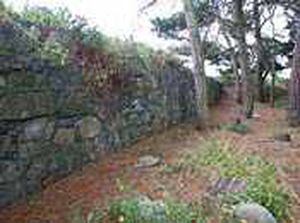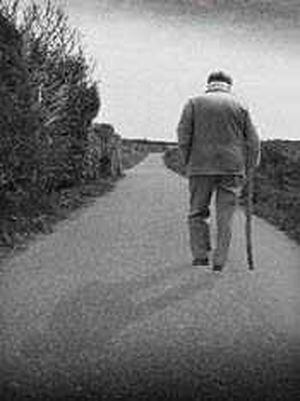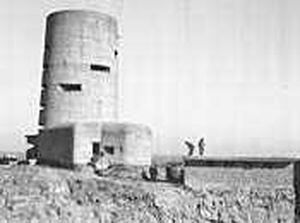Stranger than fiction
Fictional grumpy fisherman Ebenezer Le Page was perhaps Chouet's best-known resident. But what would he have made of the area's changes in recent times? The old Guern would not have been happy, says Rob Batiste.

EBENEZER LE PAGE never existed, of course, but read G. B. Edwards' masterpiece (pictured above) and there are times when you can simply shut your eyes and smell the Chouet sea air.
Strictly speaking, Le Moulin – old Ebenezer's lifetime home – never existed either, but study a copy of Ebenezer Le Page's Guernsey map (to be found in many a local bookshop) and there is no mistaking where it was mythically situated.
Author Edwards probably had in mind the now-demolished granite cottage within the small copse of pines adjacent to the 'Torrey Canyon quarry' when he chose 'Ebby' a home.
It was situated just 50 yards from the sea and no more than 100 from the little bay known on the old maps as Champ Rouget, but otherwise as Tiger Bay to informed locals.
The book never exactly pinpoints Ebenezer's home, but the reader is left in no doubt that it is at Chouet, close to the common and within yards of the sea.
Another pointer to the exact position of Le Moulin is when in the most vicious of winter gales he half expects Mont Cuet to come tumbling down on top of him.
The old cottage was flattened many years ago and there are no obvious remnants, although there is a 20m stretch of granite wall, possibly a boundary one to the north. And it is probably just as well it is no longer there and indeed that Ebenezer is long gone, because he would not have been a happy chappy.
In truth, he seldom was.
As he became old and cars replaced horse-drawn carts as a mode of travel, he hated them and avoided riding in one until the very last days of his mythical life.

So it hardly takes a genius to imagine that this fiercely proud, stubborn and most grumpy of old Guernseymen would have been driven to distraction by the steady stream of vehicles heading for the green tip and the recycling bins, not to mention the lumbering, rubbish-laden lorries which also go north up the Mont Cuet Road, bound for the dump.
Nor would he have been happy to live under a model aeroplane launching pad and would surely have caused a stink about the stink of the island's biggest tip across the road.
On the plus side – and somehow I don't imagine it would have been much of a plus for him – he could have toddled along the small, dusty path to the nearby tea rooms for a cuppa or sat at the barbecue table in front of his house, looking down at the pretty anchorage of a dozen or more fishing boats.
Chouet headland will not have altered in shape in 100 years, but take away the cars and lorries and it was still pulling many islanders towards it at the end of the 19th century.
The 1901 census proves it, with reference to several families living there.
Nowadays, there is just one house situated on the Chouet headland, but a century ago, when Ebenezer was still a very young man living with his parents there, he would have been close neighbours to a family of five living in Martello tower number 10.
Looking at the surviving tower, which stands proudly looking out south-westwards towards Grand Havre, it is almost unbelievable to think that, in 1901, 73-year-old Isaac Goddard lived in it with his wife, Jane, 65, their daughter, Elizabeth, 46, and her two children, Francis de Francise and Ellen de Francise.
The de Francise name is both unusual for Guernsey and rare, but could there be a Spanish link?
George Domaille, veteran of the entire L'Ancresse area and whose boyhood goes back to the early 1930s, was passed down the story of a Spaniard being washed up on the rocks at Chouet and, rather than return home, he opted to stay and live in the tower.
It was said that his name was Francisco and that he married a local woman and had at least two children, one of whom became a schoolmistress.
Could Elizabeth, who originally hailed from Alderney, have married Francisco and by the 1901 census had he done a runner – or simply died?
What the Goddards lacked in comfort they made up for with idyllic summer views. The picture across the bay towards Grand Havre and Rousse is surely unchanged in 1,000 years, let alone 100.

By day in 1901, the area was relatively busy with quarrymen going about their business at any of the 14 shown in the Chouet/ Mont Cuet area on period maps.
Virtually all of them have now been filled, but one of those remaining has been known as Torrey Canyon oil quarry for the past 40 years. Ebenezer would not have been happy about that, either. Once Mont Cuet is filled and the large, green hougues of the distant past return and are once again safe to explore and utilise, the headland we know as Chouet, but shown as Mont Crevel on the 1787 map by the Duke of Richmond, will be restored to its natural best.
But that is many, many years away yet.





